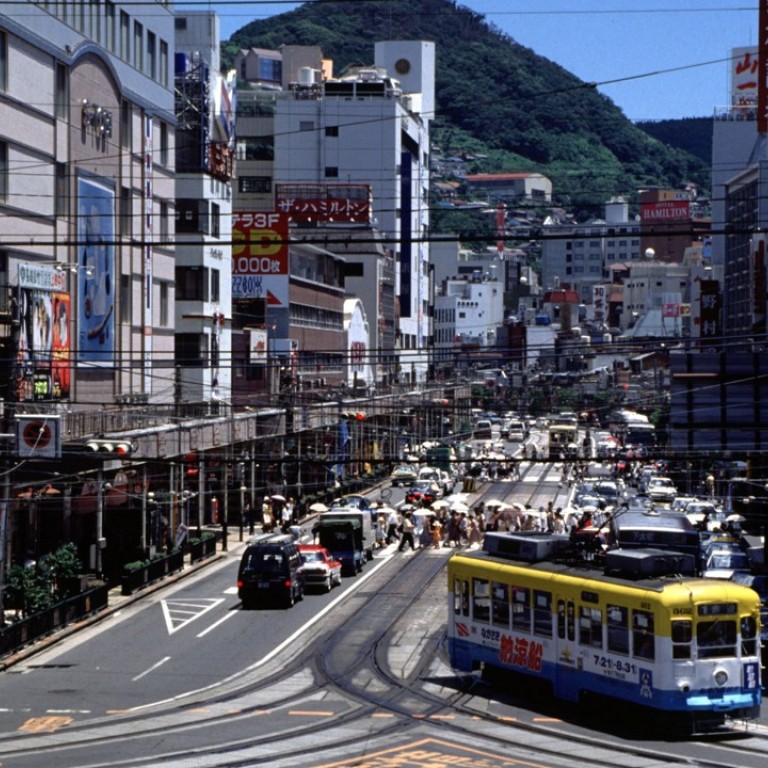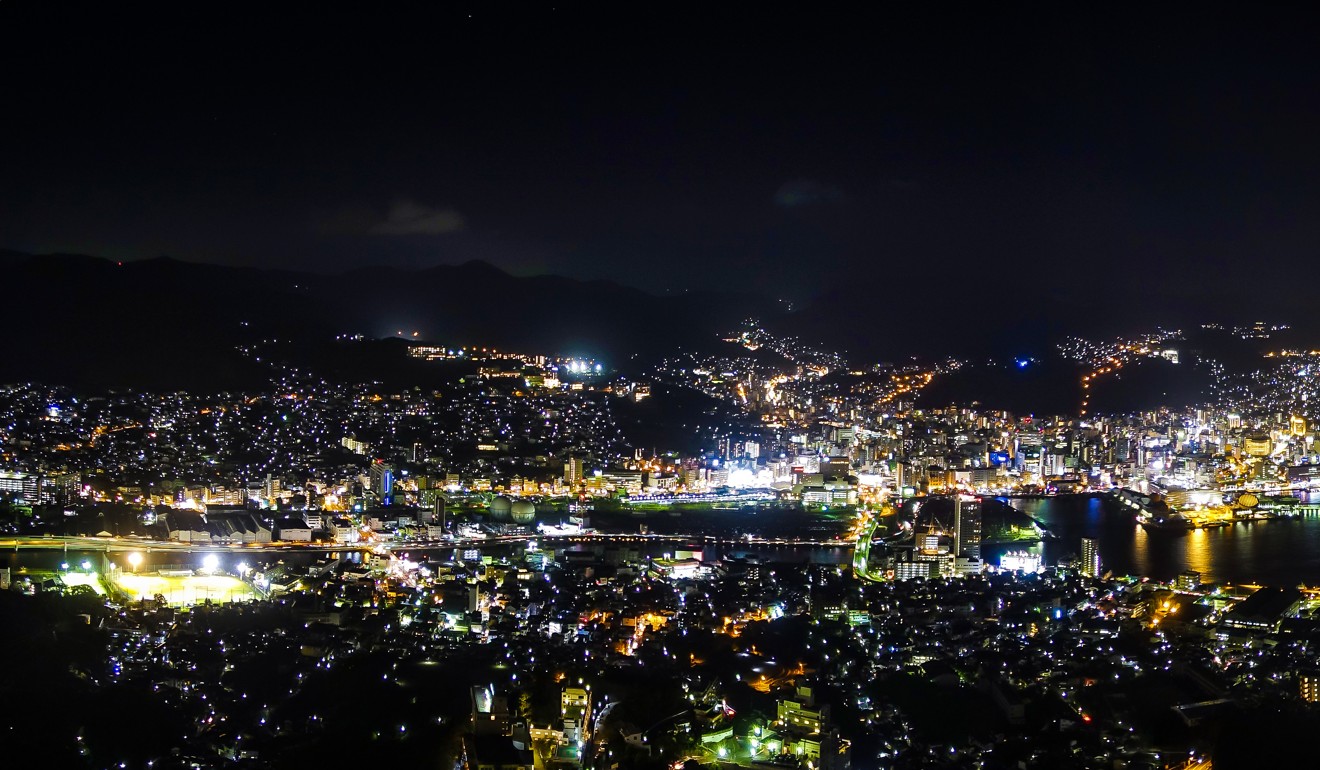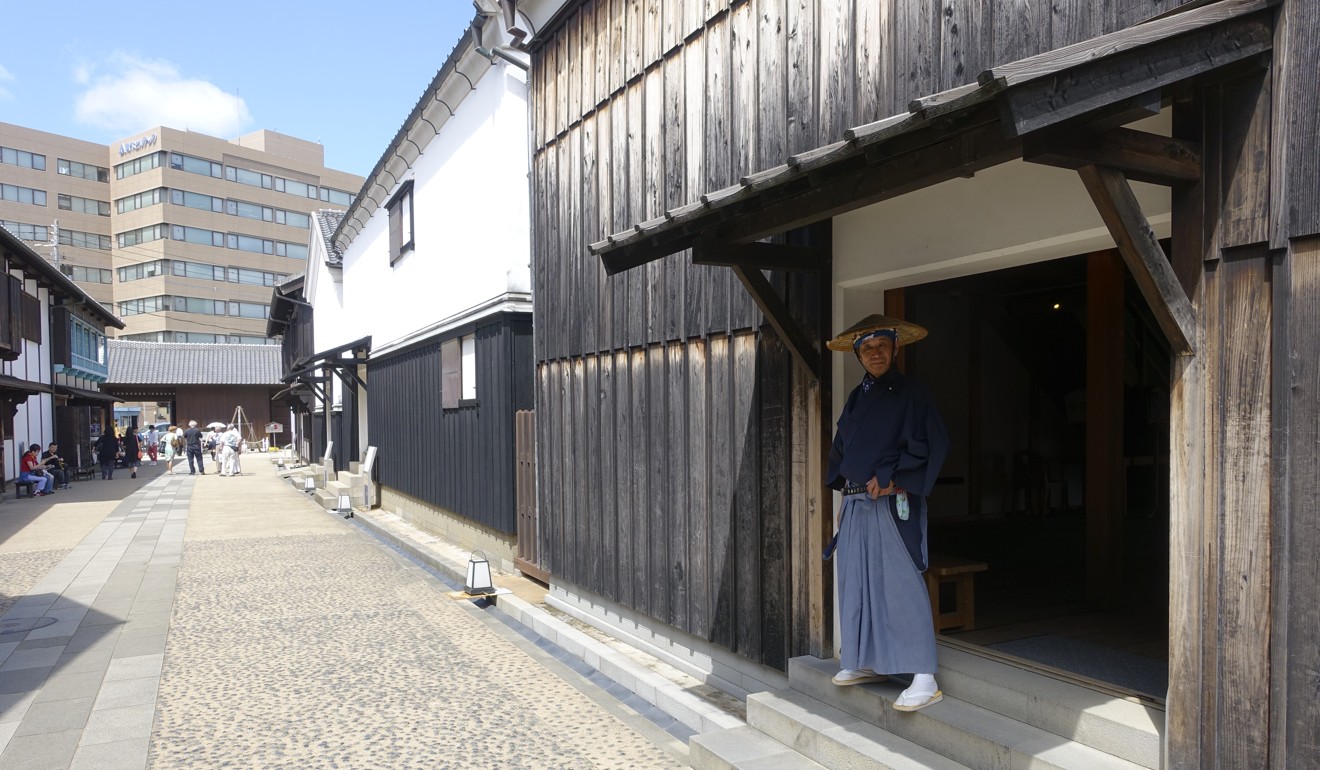
Five reasons to visit Nagasaki: a 10 million dollar view, a James Bond island, castella and champon, and the Peace Park
Best known for being the site of the second and last nuclear weapon detonated as a weapon, Nagasaki is filled with Unesco sites, beautiful scenery, interesting islands and quirky dishes
Nagasaki in Kyushu, southern Japan is famous for what happened during the second world war at 11.02 am on August 9, 1945, but while the accounts of how its citizens coped with the nuclear fallout are astonishing, this city of 1.4 million residents has a far bigger story to tell.
Its centre is full of busy izakayas and restaurants that hint at its long international outlook, with a lively Chinatown and many Chinese temples as well as the colonial Dutch Slope area, and even a reconstructed European trading port.
If its quirky food you’re after, don’t miss the Fujian-influenced champon noodles (a tasty ramen made with pork broth, vegetables and seafood) or castella. Originally brought to Japan by Portuguese merchants in the 16th century, this refined and super-soft sponge cake melts in your mouth – and is on sale everywhere you look. You can buy tickets to see the decaying Battleship Island, an intriguing and controversial offshore tourist attraction.
With Unesco World Heritage sites everywhere you go, you’ve not seen Japan until you’ve been to Nagasaki.

At Mount Inasa on the city’s western side it’s possible to ascend an observation platform (for free) and see the “10 million dollar view”. It’s hard to beat; to the left is the Urakami River and valley sides that to some extent prevented the atomic bomb’s lethal blast from spreading to a major part of the city. Below is the bustling city centre which lights up as dusk falls, with the Mount Unzen volcano in the background, while to the right is the long, narrow Nagasaki harbour stretching out towards the East China Sea.
The top observation deck is saturated with smartphones and selfie-takers, but it’s open all night. Take a seven-minute bus ride for 300 yen (US$2.70) from JR Nagasaki train station to Fuchi Shrine Station to catch the ropeway (1,230 yen for a round trip), which runs every 15 minutes. Taxis are always waiting at Inasa Dake Station at the summit. The Restaurant of Lights inside the observatory serves champon and has incredible window seating.

Just to the north of the hypocentre of the atomic bomb blast is where the world pays its respects to the estimated 75,000 plus people who lost their lives in Nagasaki in the attack and in its long, lethal aftermath.
Take the colourful Nagasaki Electric Tramway to either Matsuyama-machi or Hamaguchi-machi in the city’s northern Urakami district. The large open courtyard is a very quiet, and hugely moving place; if you visit during August or September you will likely witness – as I did – a group of schoolchildren singing songs of remembrance.
Their attention is focused on the towering Peace Statue at the back of the park. Its right hand points up to the sky where the atomic bomb exploded, its left arm is horizontal representing the wish for peace, and its eyes are closed.
The statue is flanked by two small shrines draped with garlands of origami cranes made by schoolchildren around the world. They symbolise one young Nagasaki girl’s fight with leukaemia a full decade after the blast.
If everyone on the planet visited the excellent Nagasaki Atomic Bomb Museum (free entry) nearby, nuclear weapons probably wouldn’t exist. Its stories of the ‘concentric circles of hell’ that killed thousands in the weeks after the blast will leave you numb with horror, but the audio archive in particular brilliantly conveys the suffering.

The port of Nagasaki was Japan’s only link to the rest of the world for hundreds of years, as proven by the skilfully reconstructed Dutch port of Dejima Island (300 yen) beside the city centre tram stop of the same name.
Originally a small island built in the harbour in the 17th century as a Dutch trading post, and the only place the Dutch sailors could visit, Dejima’s two-storey wooden buildings have been painstakingly restored to create the original village-like layout. The area around the island has since been reclaimed, and it’s now a short walk from the city’s bustling harbourside restaurants and bars.
Walking between and into its wooden buildings adds a sense of serenity in such close proximity to a big city centre. Inside there are examples of esoteric Dutch-Japanese interior design and various exhibitions, including the first traces of Western science in Japan, such as telescopes and guns. It takes about three or four hours to see Dejima properly.

Reached by a series of walkways, Glover Gardens (610 yen) sits atop the Dutch Slope. This is colonial Nagasaki, home to grand mansions with magnificent views over Nagasaki harbour.
Thomas Blake Glover, a Scottish merchant who was living here from the 1860s, was among the first foreigners who set foot in Meiji-era Japan after it opened up to the West. He first traded tea, then arms and coal, and was pivotal in founding the Nagasaki Shipyard and Mitsubishi (not forgetting the Japan Brewery Company, which is now known as Kirin beer). His wooden bungalow, now a Unesco World Heritage Site, is a curious hybrid Japanese-Western design, and was also supposedly the inspiration for Puccini’s opera Madame Butterfly.
The area is a fabulous place to relax, walk and take in the 360-degree views. Stop in the cafe, an incredibly atmospheric wooden colonial building that serves Dutch hand-drip coffee accompanied – of course – by a slice of castella.

Gunkanjima
Abandoned, derelict industrial islands don’t often make for good tourist sites, but Gunkanjima – which means Battleship Island in Japanese (though it’s officially called Hashima Island) – is a major exception. Most easily visited on a boat tour (3,900 yen to 4,500 yen) from Nagasaki Port Ferry Terminal, a three-hour round trip gives you an hour on the island itself.
Yet another Unesco World Heritage Site, Gunkanjima is small – just six hectares – but was home to 5,000 coal miners (including forced labour from Korea, hence the controversy) until it closed in 1974. It’s been left to rot since, and the typhoon-ravaged remains (even some of the protective sea walls have come down) give it the look and feel of a bomb site. It’s a photographers paradise, but don’t expect to be given much freedom here; tours are conducted to specific, safe spots away from the threat of falling debris.
Only recently opened up by the government, Gunkanjima’s use in James Bond film Skyfall a few years ago means it’s a busy place, and the ferries can often be crowded, so book far in advance. After the visit, the boats circle the island for the iconic ‘battleship’ perspective photo.
Getting there
Hong Kong Express and partner airlines fly between Hong Kong and Nagasaki via Tokyo or Nagoya; Asiana Airlnes flies there via Incheon

